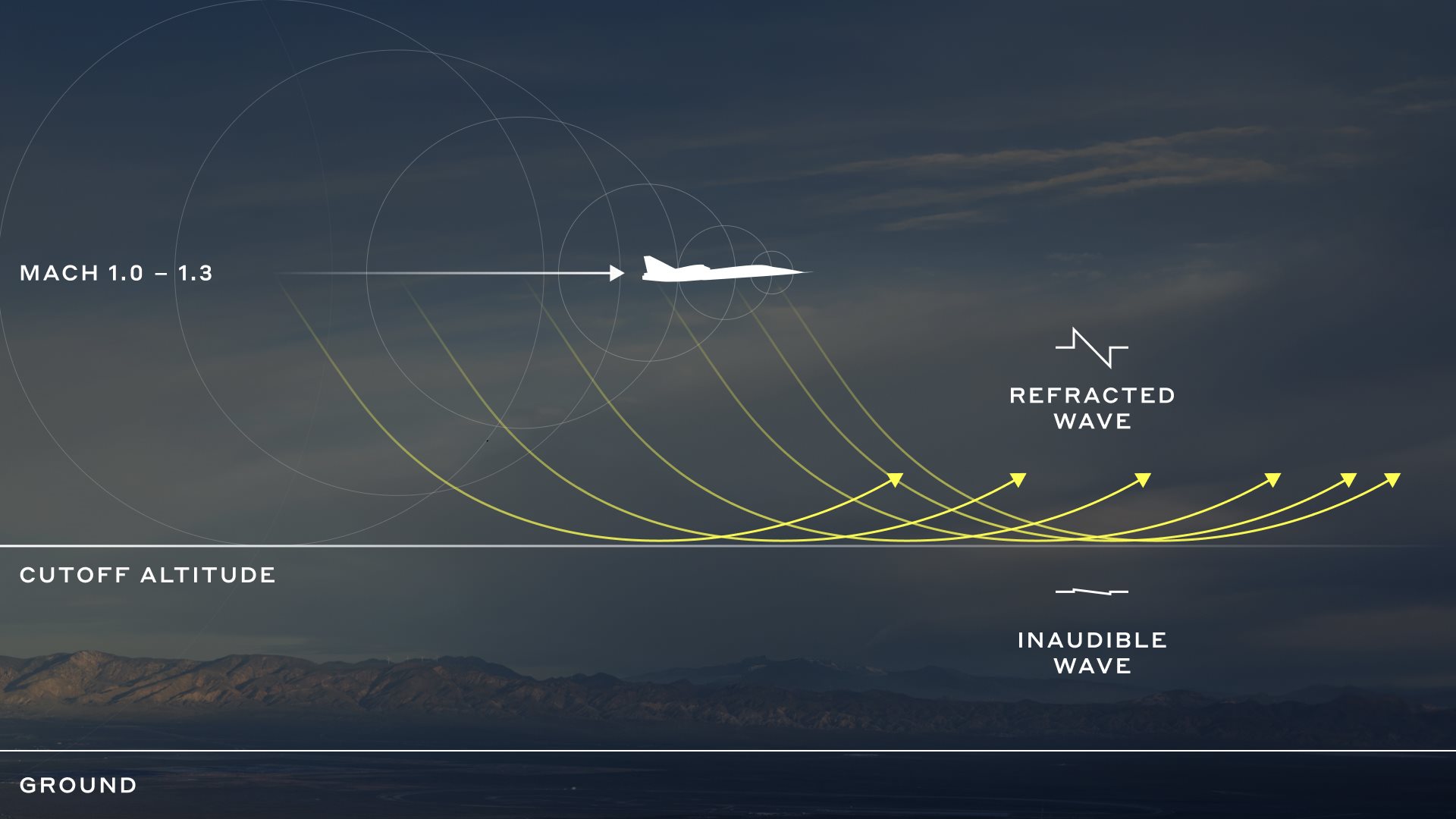Boom Supersonic, the company building the world’s fastest airliner, Overture, announced Boomless Cruise for its supersonic airliner, enabling supersonic travel over land without an audible sonic boom.

During its historic first supersonic flight on January 28, 2025, Boom’s demonstrator aircraft, XB-1, broke the sound barrier three times without generating a sonic boom that reached the ground, demonstrating that quiet supersonic travel is possible.
Boomless Cruise is based on well-established physics known as Mach cutoff, in which a sonic boom refracts in the atmosphere and never reaches the ground. This effect is achieved by breaking the sound barrier at a high enough altitude, with exact speeds varying based on atmospheric conditions.
Blake Scholl, founder and CEO of Boom Supersonic said: “XB-1 broke the sound barrier three times during its first supersonic flight—without an audible boom. This confirms what we’ve long believed: supersonic travel can be affordable, sustainable, and friendly to those onboard and on the ground. With this success, we’re bringing Boomless Cruise to Overture, unlocking faster travel on even more routes.”
Specialized microphone arrays placed in strategic locations under the flight path confirmed that sonic booms did not reach the ground as XB-1 flew at a top speed of Mach 1.12.
The data collected during XB-1’s multiple supersonic runs allowed Boom to validate sonic boom models and improve the algorithms that predict operating in Mach cutoff. This data shows that supersonic flight without the disturbance of a sonic boom is possible—opening the door to supersonic travel over land onboard Boom’s supersonic airliner, Overture.
Boomless cruise enables Overture to fly at speeds up to Mach 1.3 without an audible boom, reducing U.S. coast-to-coast flight times by up to 90 minutes. International routes with overland segments can also benefit from increased speeds.
In order to operate within today’s regulations, Boom planned to operate Overture at Mach 0.94 over land, approximately 20% faster than today’s subsonic jets, only breaking the sound barrier over water, where it would speed up to Mach 1.7, or twice as fast.
The data collected from XB-1’s supersonic flight establishes the possibility of Overture traveling up to 50% faster than today’s jets over land without an audible boom.
Boom expects to produce thrust during fully-operational engine core tests for Symphony by the end of 2025. Engine core testing will analyse performance of the compressor, combustor, and turbine section. Data gathered will further refine engineering and expedite production of a fully certified engine.

